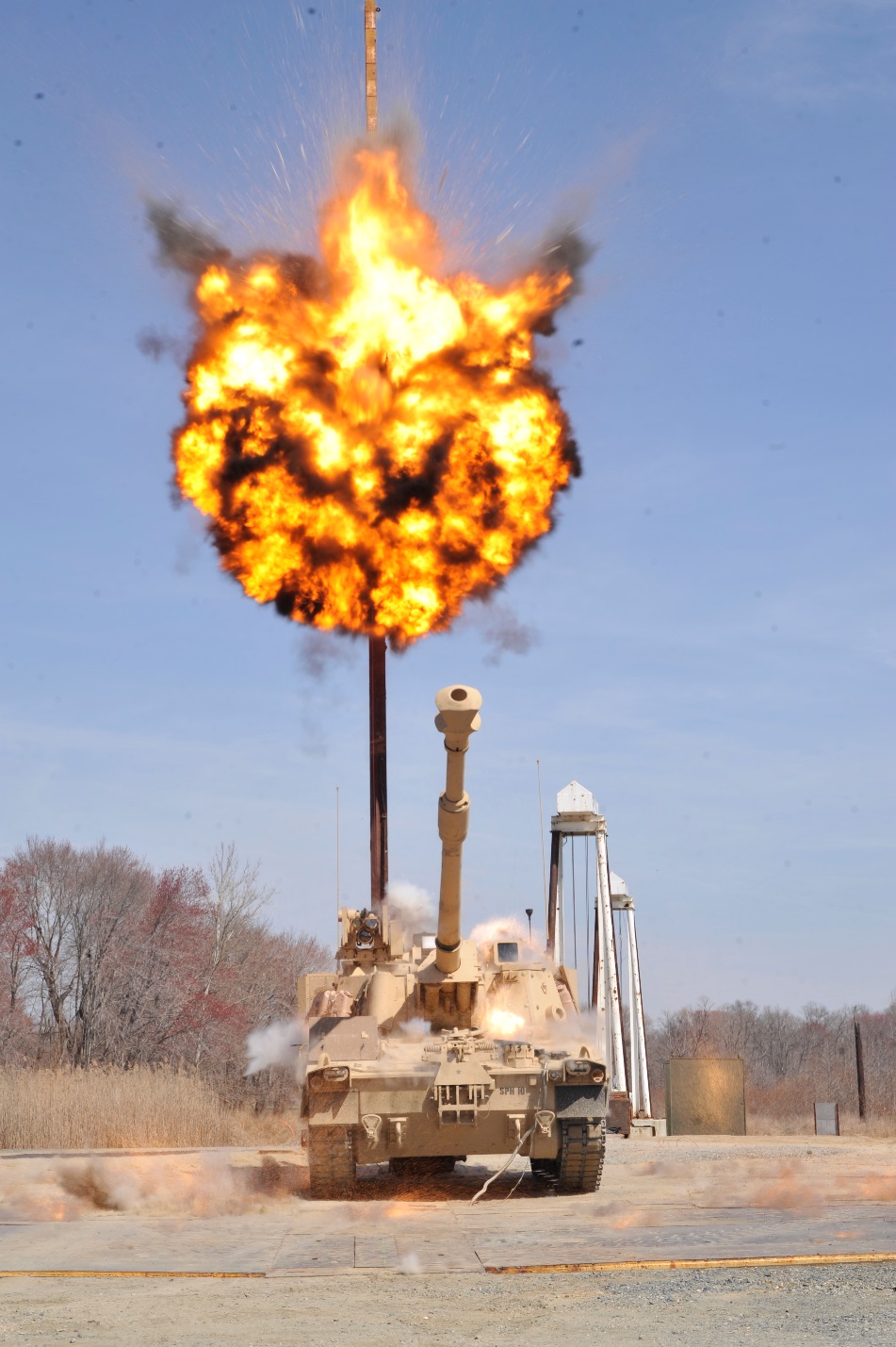We Test - You Survive
Paul J. Kwashnak, Mechanical Engineer Test Officer,
Live Fire Branch, Survivability/Lethality Directorate
The M109A7 SPH demonstrates
resilienceduring an artillery
detonation.
ATC—the Center for Excellence in Live Fire vulnerability and lethality testing
The original 155 mm M109 self-propelled howitzer (SPH) was first fielded in 1963 during the Vietnam War era. By 1993, various improvements and iterations led to the M109A6 howitzer and M992A2 ammunition carrier, with a current U.S. Army force of 547 M109A6s and 500 M992A2s within 19 Armored Brigade Combat Teams and 8 Field Artillery Battalions. The current fleet is expected to be in Army service until 2026, approximately 65 years from the day the first M109 was fielded.
The mission of Product Manager Self Propelled Howitzer Systems is to provide Maneuver and Field Artillery Commanders with an advanced, survivable and affordable fleet while sustaining the current M109A6 fleet through 2026. That’s where the M109 Family of Vehicles (FoV) rolls in, including the M109A7 Self-Propelled Howitzer and M992A3 Carrier Ammunition Tracked (CAT) vehicle. The updated M109 FoV will replace all M109A6 and M992A2 vehicles in the current fleet.
The M109A7 howitzer and M992A3 carrier provide endurance and resiliency via rapid, lethal and precision fires in adverse and hostile conditions. These vehicles incorporate agility and enhancements that are more typically seen in armored fighting vehicles. The goal of the M109A7 howitzer operating unit is to destroy, neutralize or suppress the enemy by indirect fire.
ATC has completed congressionally mandated Live Fire testing of the M109 FoV in accordance with Title 10, Section 2366, of the United States Code. Realistic ballistic testing encompasses a range of likely threats, including indirect and direct fire and explosive devices, to address military force protection and survivability. Starting in November 2015, within a year ATC performed 24 full-up system level ballistic events against operationally realistic threats, small arms vulnerability testing and a handful of additional subtests to characterize subsystem performance.
ATC uses a wide spectrum of technologies to investigate crew and system response to combat threats. Anthropomorphic test devices and wooden mannequins simulate crew members during ballistic events and contain instrumentation to collect data on how the human body responds to blasts and blast overpressure, fragments, blunt injury, thermal radiation and toxic gas. Test vehicles are fitted inside and out with state-of-the-art equipment such as photographic devices, strain gauges, thermocouples and laser tracking to monitor the environment during testing.
You are now leaving www.atc.army.mil and entering another site. You will automatically be forwarded to the target page within five seconds.

